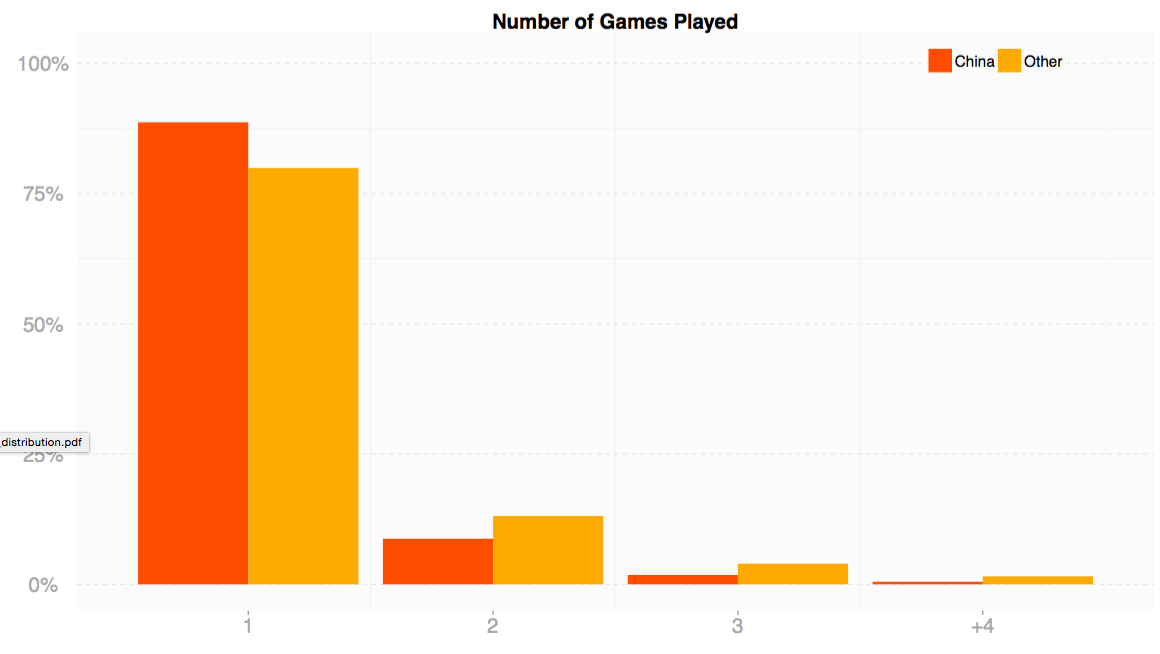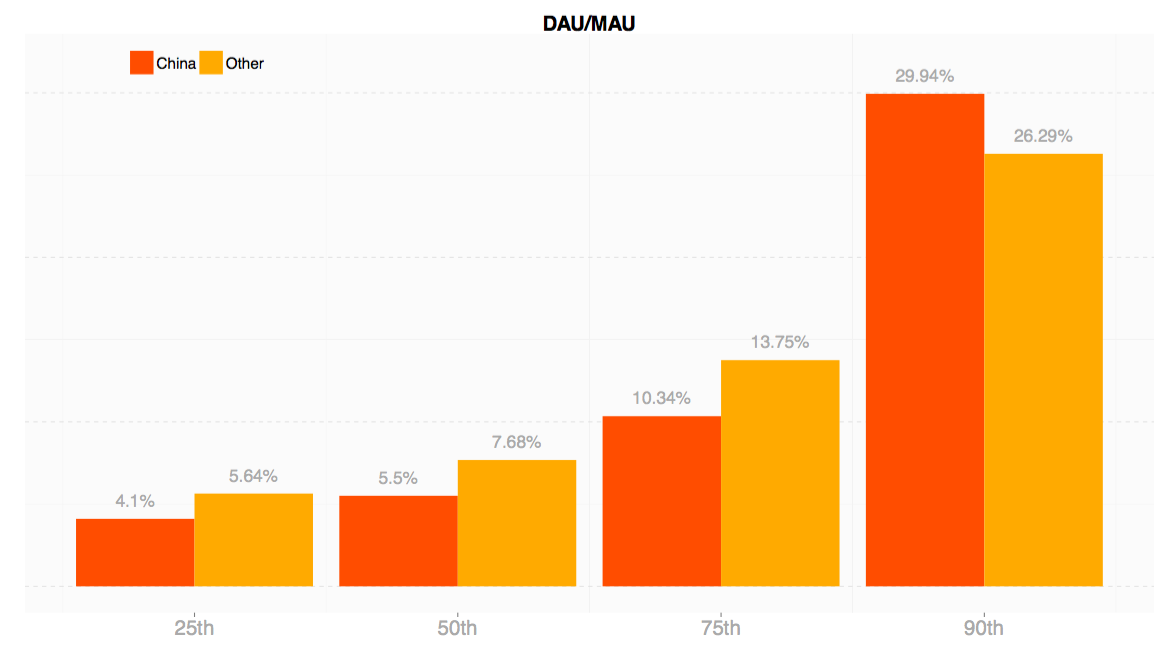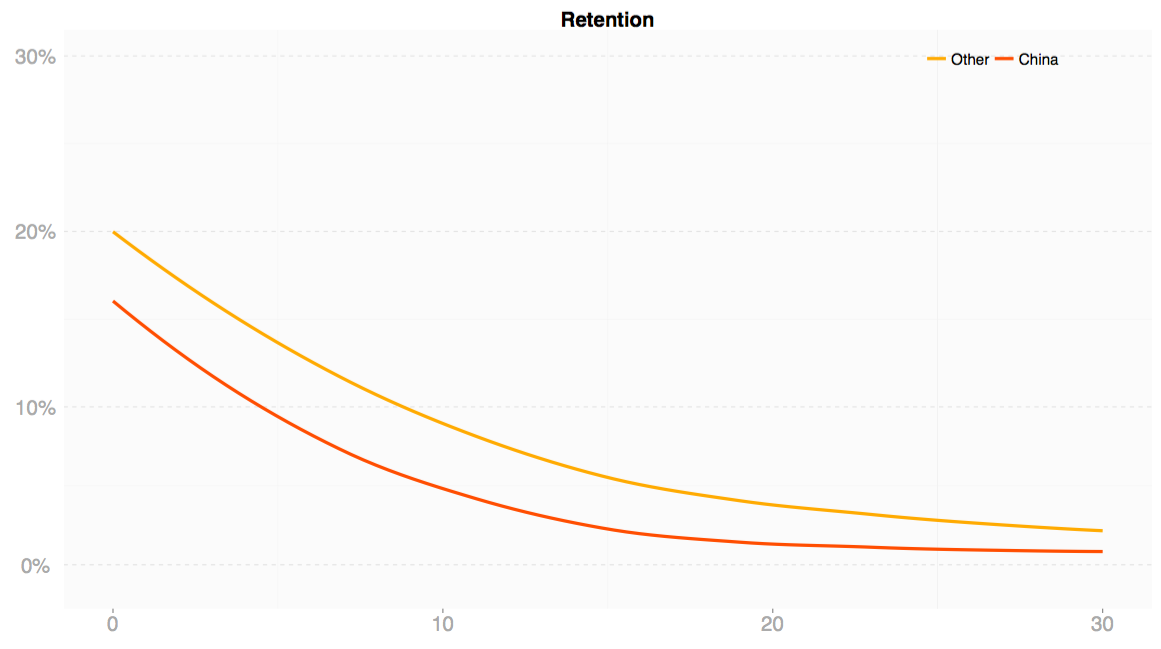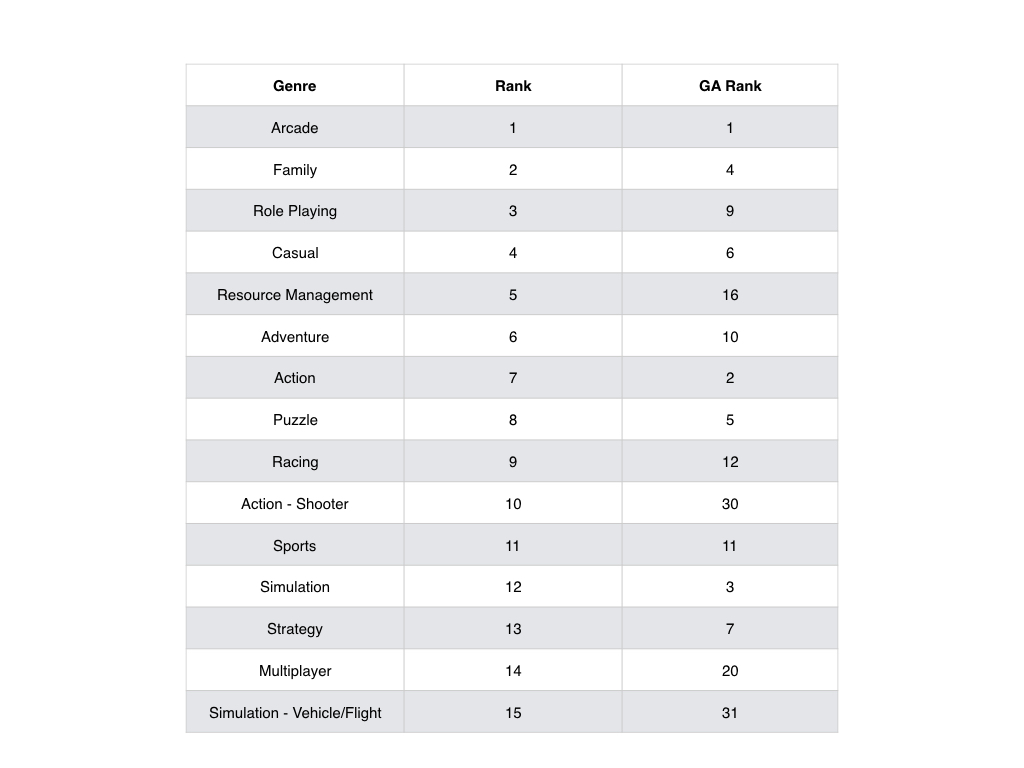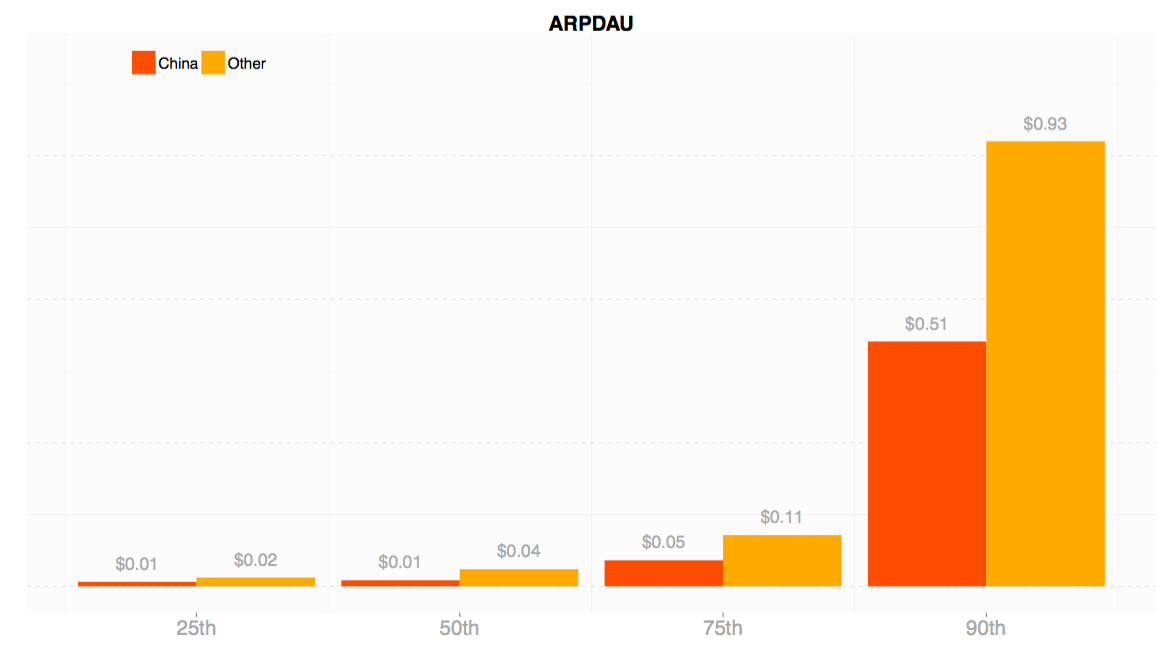· 9 min read
Chinese Gamers: in-game behaviour of players from China
During the last few years, the Chinese market has become a massive opportunity for game developers. There are 550 million active smartphones and tablets in the country, and every one of them has an average of 5 games installed. The key questions to answer, therefore, are about the players: How do Chinese players compare to players from the rest of the world? What do they prefer to play? How committed are they to a game? How many games do they usually play?
We set about answering these questions and more from a data-driven standpoint, and analysed the data in the GameAnalytics network by comparing Chinese players’ in-game behaviour to that of players from the rest of the world.
So what are the results? Here’s a teaser. What we found is that Chinese players in our network are:
- Less likely to become engaged to the games they play;
- Less likely to become spenders;
So what is it so interesting about this market? Why are Chinese players so valuable? It might be a bit tricky to get them, however:
- Once they do become engaged, they are a lot more engaged;
- Once they become spenders, they might be willing to buy the most expensive bundles and sets in your game;
Keep reading to find out more about these players!
Methodology
Before we get to the results, let us take you through the data sample, cohorts and metrics description.
 GameAnalytics’ dataset is based on the tracked digital footprint of 205M monthly active users derived from 6,234 active games, spread across more than 15 genres.
GameAnalytics’ dataset is based on the tracked digital footprint of 205M monthly active users derived from 6,234 active games, spread across more than 15 genres.
The chart below shows the genre distribution of the 6K+ games GameAnalytics tracks, based on their app store category submission, and it indicates not only a wide variety of genres covered, but also a balanced spread across these.
Chinese Players in the GameAnalytics Network
Let’s look at how Chinese players are represented in the GameAnalytics network in terms of DAU and Revenue.
The DAU distribution shows that Chinese players account for 5.19% of the players seen in the GameAnalytics network over the past 3 months. In terms of revenue, these players generated 8.65% of the total revenue attained by the games having sent revenue data to GameAnalytics during this period of time.
Cohorts
In this report we want to highlight the basic differences we see between the in-game behaviour of Chinese players and that of players from the rest of the world. We’ve based our analysis on the population distribution of two cohorts:
- China – which represents the data collected from players geolocated in China.
- Other Countries – based on data from players from the rest of the world.
Metrics
Below is a detailed description of how we calculated each of the metrics, and their definitions:
For each one of the metrics analysed, with the exception of retention, we calculated the average value per game over the last 3 months and compared the 25th, 50th, 75th and 90th percentiles of the distribution for the two cohorts. We based retention on the median calculation per cohort. The data has been smoothed out, in order to capture the trends and exclude irrelevant noise.
The Results
Player Engagement
The first thing we wanted to look at is how many games of our network chinese players play. Chinese market is very big and very competitive, and we are comparing players in our own network.
When comparing the percentage of players by the number of games played, we can see that, although it is true that Chinese players are more likely to play a single game in our Network (with 88% playing only one game), percentages are close to those for other countries (with 80% playing only one game).
So how engaged are they to those games? A good indication for this is the DAU/MAU ratio (or stickiness), and as you can see in the chart below, for each of the quantiles, the typical Chinese player is less engaged than the ones in other countries, ranging from a 4% to a 10% for the 75th percentile and below, while players from other countries start at 5% and distribute to a 14% for the same percentiles.
However, those players in the 90th percentile show a stickiness of about 4% higher than the rest. This difference proves that, even though the general population is less engaged, there’s a group of players that has got very involved in the game and sticks through with it.
This behaviour is reflected by the retention curves, where we can see that, on average, Chinese players retain less than those from other countries.
Chinese players start a 4% lower than the players from the rest of the world, which have a D1 Retention of around a 20%. After D20, most Chinese players will have churned the game, with retentions close to 0%. For other countries, though, retention stays around a 2% higher up until D30 Retention.
Chinese players play longer sessions. We all know they love new content and expect only the best from a game, and according to the results below they take some time to analyze a game.
This is a good indicative that, before going all crazy over the Asian market, you need to make sure the game is polished and entertaining. Offer a good and immersive gaming experience!
Genre Preferences
The natural question to follow after looking at retention and session length is: what genres do Chinese players prefer?
The table below breaks down the genres of the games using GameAnalytics, and shows a direct comparison in between the rank they have amongst the Chinese players compared to the rank they have in GameAnalytics’ network.
The most evident discrepancy is that some of the highest ranked genres among the Chinese players, such as Resource Management, Adventure or Shooter rank a lot lower in the GameAnalytics Network.
Casual games, including also Arcade or Puzzle stay on the top 15 for both Chinese players and those from other countries.
Monetization
The next set of questions that we examined were about the behaviour of Chinese players around monetization. The chart below shows how players living in China convert to spending money in games:
As shown, players from China are more difficult to convert to paying users than the rest of the world’s average.
Games convert Chinese players at a rate of between 0.29% and 12.56%, as opposed to those from the rest of the world, which go all the way up to 15.3%. This difference is specially noticeable in the median, where games only manage to convert a 0.77% of Chinese players, while for the rest of the conversion is places at 5.4%.
In terms of money, typical Chinese monetizers spend similarly to players from other countries, with a maximum difference of $1 for the median.
The monetizers’ behaviour at the higher end of spending comes unexpectedly. What the data shows is that China’s highest spenders have an extreme spending behaviour compared to players from the rest of the world, with the 90th percentile falling at $29.6 versus only $11.66.
So where do these differences come from? There are two options for this behaviour. Either they make more transactions or buy the most expensive sets available.
Keep reading to find out the answer!
When comparing the number of transactions per paying user, what we find is that Chinese players actually make less transactions. Players from other countries can make up to almost 40 purchases, while Chinese players stay on the 30.
Let’s focus on the amounts and analyse the revenue per purchase. When plotting the distribution, what we find is that on average, they spend more per transaction, with those on the higher end spending close to $9 per purchase.
If we now compare the metrics related to DAU, we find that Chinese players stay a bit lower both for the number of transactions and ARPDAU, which is expected from the results shown above on Conversion.
If we now compare the metrics related to DAU, we find that Chinese players stay a bit lower both for the number of transactions and ARPDAU, which is expected from the results shown above on Conversion.
Even having some users that are heavy spenders, we saw that overall, Chinese players have high expectations and will be hard to get engaged, maybe even harder to convert them.
Conclusion
So how does the profile of a typical Chinese player look like as opposed to the rest of the world?
- The typical Chinese player will retain around a 4% less from the beginning, and will stick under the median retention for other countries all the way up to day 30;
- Chinese players spend an average of 1 minute longer per session than players from other countries;
- Chinese players are harder to convert, but once they become spenders they will be likely to purchase the most expensive items in your shop;
- While players from other countries range in stickiness from 5% to 26%, Chinese players can make it to a DAU/MAU of 30%;
- Resource Management, Racing and Shooter games rank a lot higher for Chinese players than those from other countries.
How do I translate the results to my game?
- Entertaining, polished games with a lot of new content might compensate low retention. Make sure you are ready before launching!
- Don’t worry too much if they do not convert fast. Work hard to create a good game experience, but if they feel it is worth to spend their money, they will.
- Offer plenty of content to keep them entertained. They will play longer sessions, and they will take time to evaluate your game.
- Chinese players can be attracted to both casual games and niche titles, so focus on quality! Chinese players are more likely to purchase expensive items
- Chinese players are more likely to purchase expensive items, so make sure you have some in your store!
It’s interesting to see how the in-game behaviour of Chinese players – looked at from a big data perspective – is anything but typical, if stacked against the rest of the world, as a whole. Which leaves us wondering: how does the rest of the world look like when compared to… the rest of the world?




